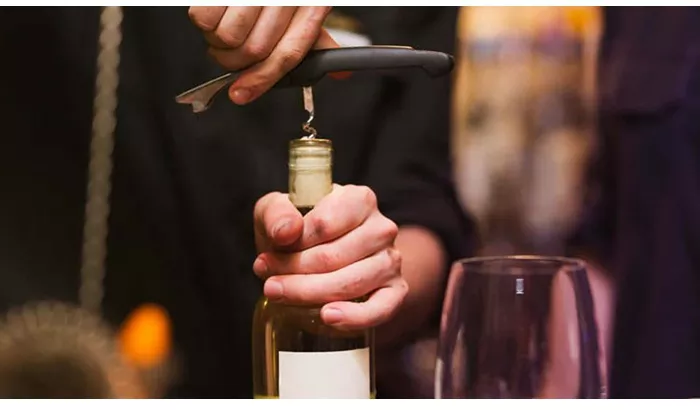The art of pairing wine and food has undergone a significant transformation, shifting from conventional rules toward a rigorous, science-driven discipline. This evolution is fueled by the growing demand among wine professionals—including oenologists, sommeliers, chefs, distributors, and marketers—for a deeper, evidence-based understanding of how wine and food interact to elevate the dining experience.
Traditionally, broad guidelines such as pairing white wines with fish and red wines with meat have dominated culinary practices. However, these conventions failed to explain why certain combinations were successful. Advances in sensory science and molecular analysis have provided precise insights into the complex interactions between volatile compounds, acids, tannins, fats, proteins, and oral sensations that influence the perception of wine and food together.
Central to this scientific approach is professional sensory analysis, conducted under strict international standards. This process involves controlled environments, trained tasters, and specialized glassware to assess wines based on visual clarity, aromatic profiles, and palate structure. The resulting data inform technical profiles that predict how wines will behave in various pairings.
Food itself possesses a complex sensory profile, comprising basic tastes—sweet, salty, sour, bitter, and umami—as well as textural sensations like spiciness and astringency. These elements can dramatically alter the perception of wine. For instance, sweetness in a dish can accentuate the acidity or bitterness of a dry wine, while food acidity can soften wine’s sharpness and highlight its fruitiness. Fat content reduces the drying sensation caused by tannins, explaining why red wines often complement red meats and aged cheeses. Additionally, salt enhances the body and roundness of wine.
Recent studies have focused on astringency, a characteristic sensation of many red wines. Astringency arises not from flavor but from tannins binding with salivary proteins, which reduces oral lubrication and creates a drying effect. Fatty and protein-rich foods mitigate this sensation by coating these proteins, softening the tactile impact. European research has revealed that different oils interact distinctly with tannins depending on their molecular structure and the condition of the oral mucosa.
Saliva plays a crucial role in these interactions by transporting aromatic molecules, facilitating chemical reactions, and protecting oral tissues. To study these dynamics, researchers have developed in vitro models and tools such as the salivary precipitation index—used to predict astringency—and cleansing effect metrics that evaluate how well a wine refreshes the palate between bites. These quantitative measures lend objectivity to what was once a largely intuitive practice.
Complementing physiological studies, molecular pairing has emerged as a groundbreaking method. Championed by pioneers like François Chartier, this technique identifies shared aromatic compounds in wine and food through gas chromatography-mass spectrometry. Dishes containing volatile molecules similar to those found in specific wines are more likely to achieve olfactory harmony.
This scientific approach enables innovative pairings beyond traditional norms. For example, red wines rich in β-damascenone, linalool, and limonene may pair well with foods featuring lavender, citrus, or floral notes. A Pinot Noir with phenylacetaldehyde and anethole could enhance sweet or spiced dishes like licorice-glazed lamb. Sparkling wines containing γ-undecalactone, associated with peach aromas, open pairing possibilities with stone fruits or floral ingredients.
Nevertheless, molecular pairing is not an inflexible rule. Aromatic overlap alone does not guarantee balance without considering factors such as ingredient proportions, temperature, and cooking methods. The expertise of sommeliers and chefs remains essential to translating molecular data into successful dining experiences.
Classic pairing strategies continue to hold value. Pairing by affinity seeks harmony through similar elements, such as matching creamy wines with creamy dishes. In contrast, pairing by opposition balances flavors—for instance, combining sweet wines with strong, salty cheeses. Both approaches remain relevant depending on the specific context.
Regional and seasonal pairings also maintain their significance. Regional pairing leverages the natural synergy between local wines and traditional dishes developed through parallel evolution, while seasonal pairing aligns wine choices with the character of seasonal ingredients, favoring light, fresh wines in summer and fuller-bodied reds in winter.
The integration of scientific principles into wine and food pairing impacts multiple facets of the wine industry. Winemakers can craft wines with profiles designed for versatility, sommeliers gain enhanced tools to recommend informed pairings and curate menus, retailers and distributors can better market wines based on pairing potential, and consumers benefit from a more rational and sensory-driven experience.
Looking ahead, ongoing research in taste neuroscience and the application of artificial intelligence in personalized pairing systems promise to further refine and evolve the field. Collaborative, cross-disciplinary efforts among wine and culinary professionals will be essential to deepening knowledge and enriching the symbiotic relationship between wine and cuisine.
You Might Be Interested In:


